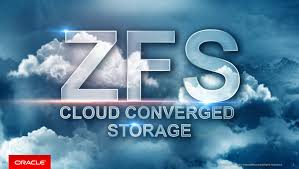I previously created a post that walked through how to configure rclone to easily access objects within the Oracle Cloud Object Store.
 |
Object Store access with rclone
This post is going to go a little deeper on how to quickly download objects from the OCI object store onto your host.
In my example, I needed to download RMAN disk backup files that were copied to the Object Store in OCI.
I have over 10 TB of RMAN backup pieces, so I am going to create an ACFS mount point to store them on.
1) Create ACFS mount point
- Use ASMCMD to create a volume on the data disk group of 20 TB
- Start ASMCMD connected to the Oracle ASM instance. You must be a user in the OSASM operating system group.
- Create the volume "volume1" on the "data" disk group
ASMCMD [+] > volcreate -G data -s 20G volume1
- Use ASMCMD to list the volume information NOTE: my volume name is volume1-123
ASMCMD [+] > volinfo -G data volume1
Diskgroup Name: DATA
Volume Name: VOLUME1
Volume Device: /dev/asm/volume1-123
State: ENABLED
...
SQL> SELECT volume_name, volume_device FROM V$ASM_VOLUME
WHERE volume_name ='VOLUME1';
VOLUME_NAME VOLUME_DEVICE
----------------- --------------------------------------
VOLUME1 /dev/asm/volume1-123
- Create the file system with mkfs from the volume "/dev/asm/volume1-123"
$ /sbin/mkfs -t acfs /dev/asm/volume1-123
mkfs.acfs: version = 19.0.0.0.0
mkfs.acfs: on-disk version = 46.0
mkfs.acfs: volume = /dev/asm/volume1-123
mkfs.acfs: volume size = 21474836480 ( 20.00 GB )
mkfs.acfs: Format complete.
- Register the file system with srvctl
# srvctl add filesystem -device /dev/asm/volume1-123 -path /acfsmounts/acfs2
-user oracle -mounttowner oracle -mountgroup dba -mountperm 755
- Start the filesystem with srvctl
$ srvctl start filesystem -device /dev/asm/volume1-123
- Change the ownership to oracle
chown -R oracle:dba /acfsmounts/acfs2
2) Use rclone to view objects
- rclone lsd - This is the simplest command to list the buckets, and as I noted previously, it lists all buckets, not just my bucket.
-1 2021-02-22 15:33:06 -1 Backups
-1 2021-02-16 21:31:05 -1 MyCloudBucket
-1 2020-09-23 22:21:36 -1 Test-20200923-1719
-1 2021-07-20 20:03:27 -1 ZDM_bucket
-1 2020-11-23 23:47:03 -1 archive
-1 2021-01-21 13:03:33 -1 bsgbucket
-1 2021-02-02 15:35:18 -1 bsgbuckets3
-1 2021-03-03 11:42:13 -1 osctransfer
-1 2021-03-19 19:57:16 -1 repo
-1 2021-01-21 19:35:24 -1 short_retention
-1 2020-11-12 13:41:48 -1 jsmithPublicBucket
-1 2020-11-04 14:10:33 -1 jsmith_top_bucket
-1 2020-11-04 11:43:55 -1 zfsrepl
-1 2020-09-25 16:56:01 -1 zs-oci-bucket
./rclone lsd oci_s3:bsgbucket
0 2021-08-14 23:58:02 -1 file_chunk
0 2021-08-14 23:58:02 -1 sbt_catalog
- rclone tree - command will list what is within my bucket as a tree structure.
[opc@rlcone-test rclone]$ ./rclone tree oci_s3:bsgbucket
/
├── expdat.dmp
├── file_chunk
│ └── 2985366474
│ └── MYDB
│ └── backuppiece
│ └── 2021-06-14
│ ├── DTA_BACKUP_MYDB_4601d1ph_134_1_1
│ │ └── yHqtjSE51L3B
│ │ ├── 0000000001
│ │ └── metadata.xml
│ └── DTA_BACKUP_MYDB_4d01d1uq_141_1_1
│ └── lS9Sdnka2nD0
│ ├── 0000000001
│ └── metadata.xml
└── sbt_catalog
├── DTA_BACKUP_MYDB_4601d1ph_134_1_1
│ └── metadata.xml
└── DTA_BACKUP_MYDB_4d01d1uq_141_1_1
└── metadata.xml
- rclone lsl- command will list what is within my bucket as a long listing with more detail
[opc@rlcone-test rclone]$ ./rclone lsl oci_s3:bsgbucket
311296 2021-01-21 13:04:05.000000000 expdat.dmp
337379328 2021-06-14 19:48:45.000000000 file_chunk/2985366474/MYDB/backuppiece/2021-06-14/DTA_BACKUP_MYDB_4601d1ph_134_1_1/yHqtjSE51L3B/0000000001
1841 2021-06-14 19:48:45.000000000 file_chunk/2985366474/MYDB/backuppiece/2021-06-14/DTA_BACKUP_MYDB_4601d1ph_134_1_1/yHqtjSE51L3B/metadata.xml
36175872 2021-06-14 19:49:10.000000000 file_chunk/2985366474/MYDB/backuppiece/2021-06-14/DTA_BACKUP_MYDB_4d01d1uq_141_1_1/lS9Sdnka2nD0/0000000001
1840 2021-06-14 19:49:10.000000000 file_chunk/2985366474/MYDB/backuppiece/2021-06-14/DTA_BACKUP_MYDB_4d01d1uq_141_1_1/lS9Sdnka2nD0/metadata.xml
1841 2021-06-14 19:48:46.000000000 sbt_catalog/DTA_BACKUP_MYDB_4601d1ph_134_1_1/metadata.xml
1840 2021-06-14 19:49:10.000000000 sbt_catalog/DTA_BACKUP_MYDB_4d01d1uq_141_1_1/metadata.xml
3) Use rclone to copy the objects to my local file system.
- copy - This is as you expect. It copies the files to the local file system and overwrites the local copy
- sync - This syncronizes the local file system with the objects in the object store, and will not copy down the object if it already has a local copy.
- -vv This option to rclone gives me "verbose" output so I can see more of what is being copied as the command is executed.
- -P This option to rclone gives me feedback on how much of the object has downloaded so far to help me monitor it.
- --multi-threaded-streams 12 This option to rclone breaks larger objects into chunks to increase the concurrency.
- --transfers 64 This option to rclone allows for 64 concurrent transfers to occur. This increases the download throughput
- oci-s3:bsgbucket - This is the source to copy/sync
- /home/opc/acfs - this is the destination to copy/.sync with
opc@rlcone-test rclone]$ ./rclone -vv sync -P --multi-thread-streams 12 --transfers 64 oci_s3:bsgbucket /home/opc/acfs
2021/08/15 00:15:32 DEBUG : rclone: Version "v1.56.0" starting with parameters ["./rclone" "-vv" "sync" "-P" "--multi-thread-streams" "12" "--transfers" "64" "oci_s3:bsgbucket" "/home/opc/acfs"]
2021/08/15 00:15:32 DEBUG : Creating backend with remote "oci_s3:bsgbucket"
2021/08/15 00:15:32 DEBUG : Using config file from "/home/opc/.config/rclone/rclone.conf"
2021/08/15 00:15:32 DEBUG : Creating backend with remote "/home/opc/acfs"
2021-08-15 00:15:33 DEBUG : sbt_catalog/DTA_BACKUP_MYDB_4601d1ph_134_1_1/metadata.xml: md5 = 505fc1fdce141612c262c4181a9122fc OK
2021-08-15 00:15:33 INFO : sbt_catalog/DTA_BACKUP_MYDB_4601d1ph_134_1_1/metadata.xml: Copied (new)
2021-08-15 00:15:33 DEBUG : expdat.dmp: md5 = f97060f5cebcbcea3ad6fadbda136f4e OK
2021-08-15 00:15:33 INFO : expdat.dmp: Copied (new)
2021-08-15 00:15:33 DEBUG : Local file system at /home/opc/acfs: Waiting for checks to finish
2021-08-15 00:15:33 DEBUG : Local file system at /home/opc/acfs: Waiting for transfers to finish
2021-08-15 00:15:33 DEBUG : file_chunk/2985366474/MYDB/backuppiece/2021-06-14/DTA_BACKUP_MYDB_4601d1ph_134_1_1/yHqtjSE51L3B/0000000001: Starting multi-thread copy with 2 parts of size 160.875Mi
2021-08-15 00:15:33 DEBUG : file_chunk/2985366474/MYDB/backuppiece/2021-06-14/DTA_BACKUP_MYDB_4601d1ph_134_1_1/yHqtjSE51L3B/0000000001: multi-thread copy: stream 2/2 (168689664-337379328) size 160.875Mi starting
2021-08-15 00:15:33 DEBUG : file_chunk/2985366474/MYDB/backuppiece/2021-06-14/DTA_BACKUP_MYDB_4601d1ph_134_1_1/yHqtjSE51L3B/0000000001: multi-thread copy: stream 1/2 (0-168689664) size 160.875Mi starting
2021-08-15 00:15:33 DEBUG : file_chunk/2985366474/MYDB/backuppiece/2021-06-14/DTA_BACKUP_MYDB_4d01d1uq_141_1_1/lS9Sdnka2nD0/metadata.xml: md5 = 0a8eccc1410e1995e36fa2bfa0bf7a70 OK
2021-08-15 00:15:33 INFO : file_chunk/2985366474/MYDB/backuppiece/2021-06-14/DTA_BACKUP_MYDB_4d01d1uq_141_1_1/lS9Sdnka2nD0/metadata.xml: Copied (new)
2021-08-15 00:15:33 DEBUG : file_chunk/2985366474/MYDB/backuppiece/2021-06-14/DTA_BACKUP_MYDB_4601d1ph_134_1_1/yHqtjSE51L3B/metadata.xml: md5 = 505fc1fdce141612c262c4181a9122fc OK
2021-08-15 00:15:33 INFO : file_chunk/2985366474/MYDB/backuppiece/2021-06-14/DTA_BACKUP_MYDB_4601d1ph_134_1_1/yHqtjSE51L3B/metadata.xml: Copied (new)
2021-08-15 00:15:33 DEBUG : sbt_catalog/DTA_BACKUP_MYDB_4d01d1uq_141_1_1/metadata.xml: md5 = 0a8eccc1410e1995e36fa2bfa0bf7a70 OK
2021-08-15 00:15:33 INFO : sbt_catalog/DTA_BACKUP_MYDB_4d01d1uq_141_1_1/metadata.xml: Copied (new)
2021-08-15 00:15:33 INFO : file_chunk/2985366474/MYDB/backuppiece/2021-06-14/DTA_BACKUP_MYDB_4d01d1uq_141_1_1/lS9Sdnka2nD0/0000000001: Copied (new)
2021-08-15 00:15:34 DEBUG : file_chunk/2985366474/MYDB/backuppiece/2021-06-14/DTA_BACKUP_MYDB_4601d1ph_134_1_1/yHqtjSE51L3B/0000000001: multi-thread copy: stream 1/2 (0-168689664) size 160.875Mi finished
Transferred: 333.398Mi / 356.554 MiByte, 94%, 194.424 MiByte/s, ETA 0s
Transferred: 6 / 7, 86%
Elapsed time: 2.0s
Transferring:






















